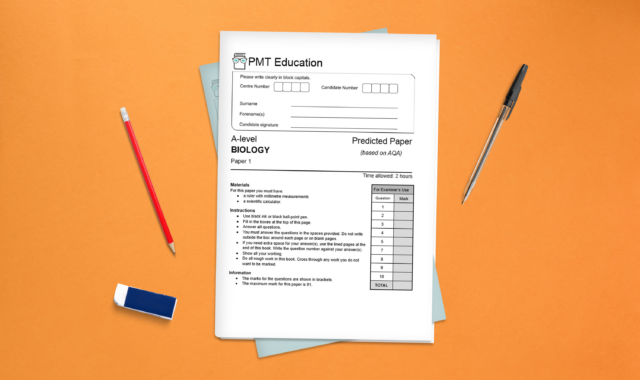It is difficult to improve upon perfection. This is how I feel about the humble – yet infinitely powerful – index card.
The index card is one of a small number of objects I carry to every single lesson I teach. In this article, I’ll outline three simple routines that you can embed directly into your own English lessons, all of which promote high quality thinking and start with a simple index card.
Linking quotations
Begin by sharing with students a list of quotations from a given text, ideally about ten. Looking at this list, ask students to select any two that they believe connect in an especially interesting way. The criteria for connection can be anything at all: it only matters that it’s meaningful.
Now, hand each student a single index card and ask them to label one side of the card ‘A’ and one side ‘B’. On the side labelled ‘A’, ask students to write down why, in particular, they selected these two quotations. Perhaps prompt students to begin with this sentence: ‘These two images connect together in an interesting way because…’
After five or ten minutes, ask students to turn their card over. On the side labelled ‘B’, they now have the opportunity to upgrade their initial response. At this point, introduce a couple of scaffolded prompts: ‘If you haven’t already, try to include X’. It’s still the same task, but students have the chance to add more detail and be ever tighter in their expression.

Finally, collect the index cards and give them a shuffle. I like to place them under the visualiser one at a time, using each card as a starting point for further discussion and exploration. The nature of the task – pick two quotations and think about how they connect – plus the physical constraint of the index card invariably leads to finely crafted, inventive and personal responses. A wonderful way to generate student thinking and share ideas.
Scaffolding structure
Structuring an essay is fiendishly difficult. It’s so difficult, in fact, that Pulitzer-Prize winning author John McPhee once spent two weeks lying on a picnic table thinking about how to start an article he was writing. The index card can help alleviate some of this difficulty.
Having presented the class with an essay question, ask them first of all to brainstorm some ideas. This could be as a mind map, bullet point list or simply a hurried block of prose. Now hand each student a small stack of index cards. Ask them to transfer their initial ideas onto these cards, adding any extra ones as they do. A single index card might contain a quotation, a relevant moment or scene, or a snippet of analysis.
With the raw material of their essay atomised onto index cards, now we consider the best way to arrange them. This is where we start to think structurally. Encourage students to move around their index cards, considering which ideas fit together and in what order to sequence them. No longer static, their thinking takes on a spatial dimension: it exists ‘out there’, better able to be manipulated, rearranged and experimented on.

If you find students struggle with this at first, make sure to model the process. Gather together your own index cards and start to move them around under the visualiser, being sure to verbalise your thought process. Which ideas fit together? Where should I begin? What should be next? You’re not just teaching essay structure, but structural thinking.
Connecting across an anthology
First, write the titles of the studied poems onto index cards, one title per card. Place these under a visualiser so students can see all of them in one glance. Next, find two tokens. You could use an old board game token or just rip out a little piece of paper. You will use these tokens to track class discussion as it develops.
From this simple starting point, there is a lot we can do to help students forge connections across the anthology. Perhaps you begin by placing the tokens on two poems you know fit well together. Ask students to write down or discuss in pairs how the two connect before sampling the room. Alternatively, you could invite a student to suggest a starting poem, which then has the token placed on it, with the class now considering all the other poems that connect. Or, place the tokens on two poems chosen at random. Again, ask students to consider all the ways they connect, but this time, they’re obliged to consider unfamiliar and more inventive lines of connection.
This block is currently empty. Please add some content.
This is such a simple strategy, but it really does make a difference. Seeing all the titles at one glance – itemised on index cards – helps students think about the anthology as a patterned whole and the tokens offer a physical way to track the developing conversation, as well as signposting different combinations.
None of these activities are especially complex or groundbreaking, but they can lead to fascinating classroom moments, helping to facilitate better thinking and better understanding. Like the index card itself, sometimes the simplest things make the biggest difference.







Comments